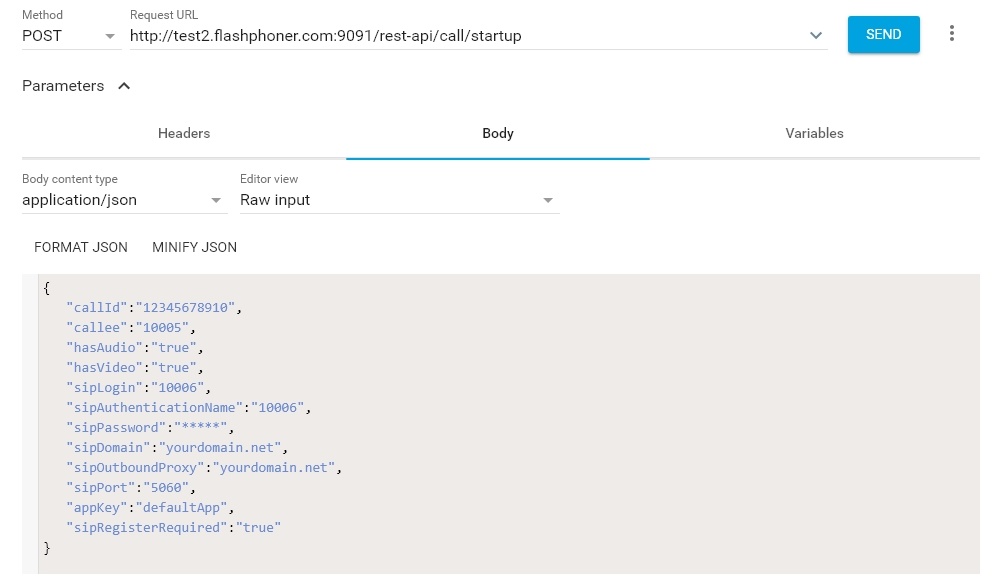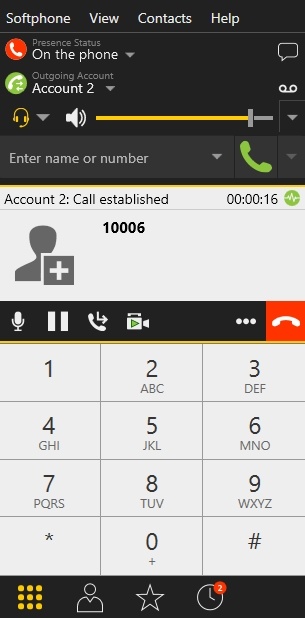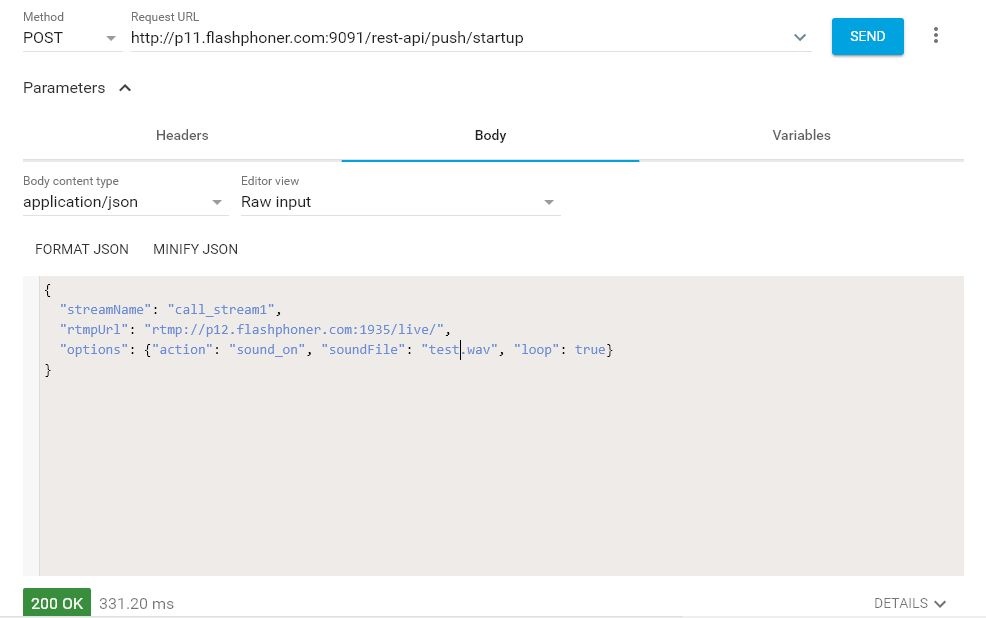1. For the test we use:
- two SIP accounts;
- a softphone to answer the call;
- the REST client of the Chrome browser.
2. On the WCS server create a directory: /usr/local/FlashphonerWebCallServer/media. Put a file in the RIFF WAV format there, for example test.wav.
3. Open the REST client. Send the /call/startup query to the WCS server and specify in its parameters:
- parameters of your SIP account the call is made from;
- the name of your second SIP account the call is made to;
- the name of the stream for the following /push/startup query, for example call_stream1:
4. Receive the call in the softphone:
5. From the REST client send the /push/startup query to the WCS server and specify in the query's parameters:
- the URL of the WCS server to accept the RTMP stream;
- the name of the call (call_stream1);
- audio file to stream redirection options "options": {"action": "sound_on", "soundFile": "sound.wav", "loop": true}
6. From the REST-client send the /call/inject_stream query to the WCS server and specify in the query's parameters:
- the identifier of the call;
- the name of the stream with the applied audio file (rtmp_call_stream1).
Make sure the softphone plays the test file.
7. To terminate the call, click the corresponding button in the softphone.



